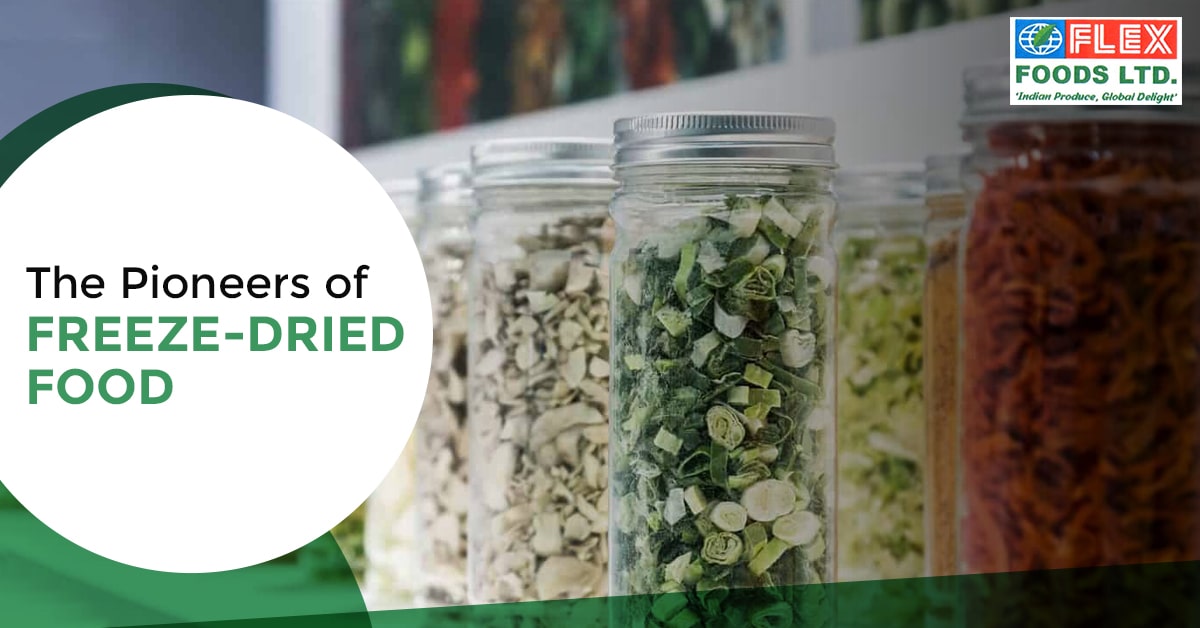We have invented numerous methods to keep fruits fresh and going. The newest one on the list is freeze-drying. It involves,
- The fruit is frozen quickly
- It's put in a vacuum chamber
- The ice turns directly into vapor
- This leaves behind the fruit's structure
Freeze-drying vs. Dehydration
Freeze-Dried Fruits:
- Use very low temperatures
- Remove 98-99% of moisture
- Keep their original shape
- Have a light, crispy texture
- Rehydrate quickly
Dehydrated Fruits:
- Use warm air to remove moisture
- Remove about 90-95% of moisture
- Often shrink and wrinkle
- Have a chewy texture
- Take longer to rehydrate
Taste and Nutrition:
- Freeze-dried fruits often taste more like fresh fruit
- They keep more of their original nutrients
- Dehydrated fruits may have a more concentrated, sweeter taste
- Some nutrients are lost in both methods, but less in freeze-drying
Canning vs. Freeze-drying
Canning is another old method of preserving fruit. Let's see how it compares:
Freeze-Dried Fruits:
- Are light and don't need special containers
- Keep their original shape and color
- Have a crispy texture
- Can be eaten as-is or rehydrated
Canned Fruits:
- Are heavy and need special cans
- May lose some shape and color
- Are soft and often in syrup
- Are ready to eat but can't be dried out again
Taste and Nutrition:
- Freeze-dried fruits taste more like fresh fruit
- They keep more of their original nutrients
- Canned fruits may taste cooked or overly sweet
- Canning can cause some nutrient loss, especially vitamins
Shelf Life:
- Freeze-dried fruits last 25-30 years
- Canned fruits typically last 1-2 years
Cost:
- Freeze-dried fruits cost more initially
- Canned fruits are usually cheaper
Frozen fruits vs. Freeze-dried
Freeze-Dried Fruits:
- Don't need to stay cold
- Are light and take up less space
- Have a crispy texture
- Can last for years at room temperature
Frozen Fruits:
- Need to stay in the freezer
- Keep their original water content
- Have a soft texture when thawed
- Last about a year in the freezer
Taste and Nutrition:
- Both methods keep most of the fruit's nutrients
- Freeze-dried fruits have a more intense flavor
- Frozen fruits taste very close to fresh when thawed
Cost:
- Freeze-dried fruits cost more upfront
- Frozen fruits are cheaper but need constant freezer space
Uses:
- Freeze-dried fruits are great for snacks and dry recipes
- Frozen fruits are best for smoothies and cooked dishes
Frozen fruits vs. Freeze-dried
Making jam is a tasty way to preserve fruit. Let's compare:
Freeze-Dried Fruits:
- Contain just the fruit
- Keep their original shape
- Have a crispy texture
- Can be rehydrated
Jams and Preserves:
- Contain fruit, sugar, and sometimes pectin
- Fruit is broken down or in pieces
- Have a soft, spreadable texture
- Can't be turned back into whole fruit
Taste and Nutrition:
- Freeze-dried fruits taste like intensified fresh fruit
- They keep most of their original nutrients
- Jams are very sweet and have a cooked fruit flavor
- Jams have added sugar and fewer nutrients per serving
Fruit Leather vs. Freeze-dried Fruits
Freeze-Dried Fruits:
- Keep their original shape
- Have a light, crispy texture
- Can be rehydrated
Fruit Leather:
- Is made from pureed fruit
- Has a chewy, pliable texture
- Can't be turned back into whole fruit
Taste and Nutrition:
- Freeze-dried fruits taste more like fresh fruit
- They keep more of their original nutrients
- Fruit leather has a concentrated fruit flavor
- It keeps many nutrients but some are lost in processing
Candying and freeze-drying
Freeze-Dried Fruits:
- Contain just the fruit
- Keep their original shape
- Have a light, crispy texture
- Can be rehydrated
Candied Fruits:
- Are infused with sugar syrup
- May keep their shape but are heavier
- Have a chewy, very sweet texture
- Can't be turned back into regular fruit
Taste and Nutrition:
- Freeze-dried fruits taste like intense fresh fruit
- They keep most of their original nutrients
- Candied fruits are very sweet
- They have a lot of added sugar and fewer original nutrients
Shelf Life:
- Freeze-dried fruits last 25-30 years. Yes, you can enjoy
freeze-dried mango all round the year.
- Candied fruits can last 6-8 months
Candying and freeze-drying
Cost: They're usually more expensive than other preserved fruits.
Fragile: The crispy pieces can get crushed easily.
Rehydration Needed: For some uses, you need to add water first.
Less Common: Not as easy to find as other preserved fruits.
Energy Intensive: The freeze-drying process uses a lot of energy.
Choosing the Right Preservation Method
So, which method is best? It depends on what you need:
- For long-term storage: Freeze-dried or dehydrated
- For everyday use: Frozen or canned
- For spreads: Jam or preserves
- For sweet treats: Candied fruits
- For chewy snacks: Fruit leather
Each method has its place. Many people use a mix of methods to suit different needs.
DIY Fruit Preservation
Can you do these methods at home? Some are easier than others:
- Dehydrating: You can use a home dehydrator or even your oven
- Canning: Possible with the right equipment and knowledge
- Freezing: Easy with any freezer
- Jam-making: A common home activity
Environmental Considerations
Different preservation methods have different environmental impacts:
- Freeze-drying uses a lot of energy but creates lightweight products
- Canning uses less energy but creates heavier products
- Freezing uses ongoing energy for storage
- Dehydrating can be done with solar power in some climates
Consider these factors if environmental impact is important to you.
Taste and Nutrition:
Freeze-dried food in India is making huge waves. Each fruit preservation method has its strengths. Choose one wisely that fits your requirements.

